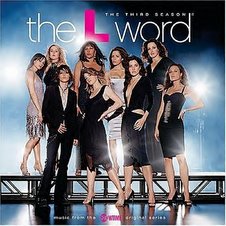As a film theorist
Mulvey is best known for her essay, "
Visual Pleasure and Narrative Cinema", written in 1973 and published in 1975 in the influential British film theory journal
Screen. It later appeared in a collection of her essays entitled Visual and Other Pleasures, and numerous other anthologies. Her article was one of the first major essays that helped shift the orientation of
film theory towards a
psychoanalytic framework, influenced by the theories of
Sigmund Freud and
Jacques Lacan. Prior to Mulvey, film theorists such as
Jean-Louis Baudry and
Christian Metz had attempted to use
psychoanalytic ideas in their theoretical accounts of the cinema, but Mulvey's contribution was to inaugurate the intersection of
film theory,
psychoanalysis, and
feminism.
Mulvey's article engaged in no empirical research of film audiences. She instead stated that she intended to make a "political use" of Freud and Lacan, and then used some of their concepts to argue that the cinematic apparatus of
classical Hollywood cinema inevitably put the spectator in a masculine subject position, with the figure of the woman on screen as the object of desire. In the era of classical Hollywood cinema, viewers were encouraged to identify with the protagonist of the film, who tended to be a man. Meanwhile, Hollywood female characters of the 1950s and 60s were, according to Mulvey, coded with "to-be-looked-at-ness." Mulvey suggests that there were two distinct modes of the male
gaze of this era: "voyeuristic" (i.e. seeing women as 'whores') and "fetishistic" (i.e. seeing women as 'madonnas').
Mulvey argued that the only way to annihilate the "
patriarchal" Hollywood system was to radically challenge and re-shape the filmic strategies of classical Hollywood with alternative feminist methods. She called for a new feminist avant-garde filmmaking that would rupture the magic and pleasure of classical Hollywood filmmaking. She wrote, "It is said that analysing pleasure or beauty annihilates it. That is the intention of this article".
Radical feminists made a major criticism of "Visual Pleasure and Narrative Cinema". They claimed that, while Mulvey believed that classical Hollywood cinema reflected and shaped the "patriarchal order", the perspective of her writing actually remained within that very heterosexual order. The article was thus said to have contradicted its "radical" claims, by actually being a covert perpetuation of
heterosexual patriarchal order. This was because, in her article, Mulvey presupposes the spectator to be a heterosexual man. She was thus felt to be denying the existence of
lesbian women and even heterosexual women.
"Visual Pleasure and Narrative Cinema" was the subject of much
interdisciplinary discussion among film theorists that continued into the mid 1980s. Critics of the article objected to the fact that her argument implied the impossibility of genuine 'feminine' enjoyment of the classical Hollywood cinema, and to the fact that her argument did not seem to take into account spectatorships that were not organised along the normative lines of gender. For example, a metaphoric '
transvestism' might be possible when viewing a film – a male viewer might enjoy a 'feminine' point-of-view provided by a film, or vice versa; gay, lesbian and bisexual spectatorships might also be different. Her article also did not take into account the findings of the later wave of
media audience studies on the complex nature of fan cultures and their interaction with stars. Gay male film theorists such as
Richard Dyer have used Mulvey's work as a starting point to explore the complex projections that many gay men fix onto certain female stars (e.g.
Liza Minnelli,
Greta Garbo,
Judy Garland).
Mulvey later wrote that her article was meant to be a provocation or a manifesto, rather than a reasoned academic article that took all objections into account. She addressed many of her critics, and changed some of her opinions, in a follow-up article, "Afterthoughts on 'Visual Pleasure and Narrative Cinema'" (which also appears in the Visual and Other Pleasures collection).
Mulvey's most recent book is titled Death 24x a Second: Stillness and the Moving Image (2006).















